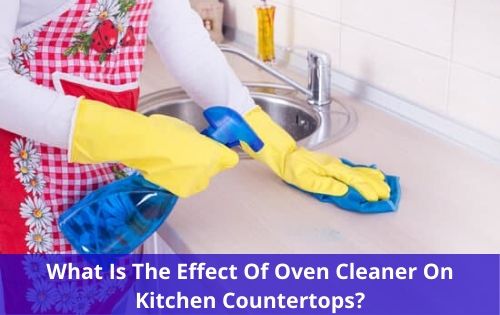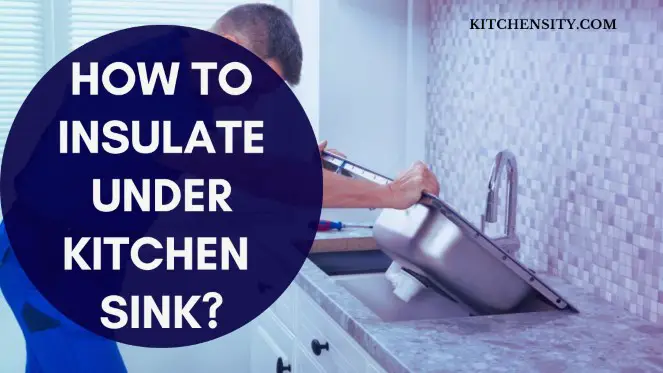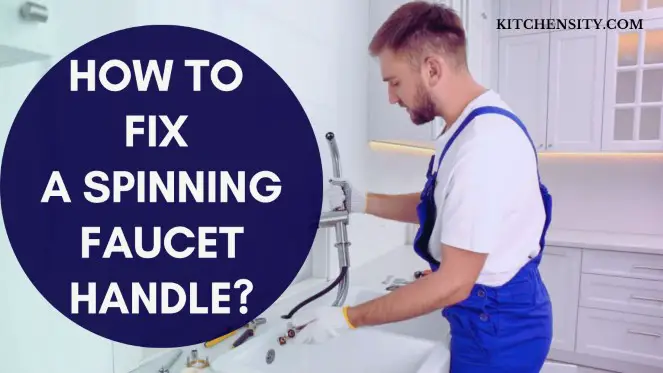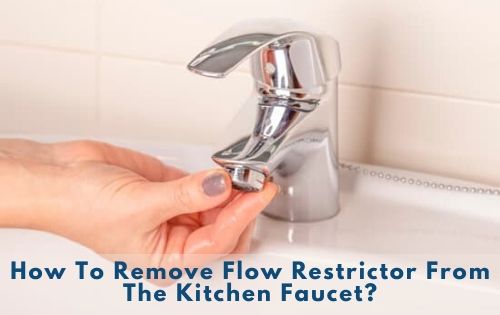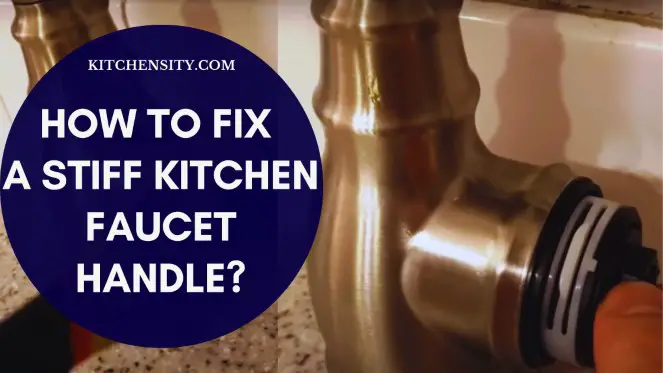If you’re like most people, you probably don’t spend a lot of time thinking about the insulation under your kitchen sink.
However, this often-overlooked area of your home can have a big impact on your energy bills, the health of your home, and the environment.
In fact with proper insulation, you can prevent condensation, regulate temperature, and even save money on energy bills.
With so many options available, it can be overwhelming to decide which insulation to choose.
In this article, we’ll explore the best insulation options for under your kitchen sink to help you make an informed decision.
![Best Insulation Under The Kitchen Sink [3 Top Insulations] 1 Best Insulation Under The Kitchen Sink](https://www.kitchensity.com/wp-content/uploads/2023/04/Best-Insulation-Under-The-Kitchen-Sink.jpg)
Table of Contents
Why Insulate Under The Kitchen Sink?
- The area under your kitchen sink is an important space that is often used to store cleaning supplies, garbage bags, and other household items.
- It’s also a place where plumbing and drainage pipes may be located, which can lead to condensation and water damage if not properly insulated.
- By insulating this area, you can help prevent heat loss, reduce energy bills, and protect your home from moisture damage.
Best Insulation Under The Kitchen Sink
When it comes to insulating the area under your kitchen sink, there are several types of insulation to choose from.
Each has its own advantages and disadvantages, so it’s important to understand the differences between them before making a decision.
In this section, we’ll take a closer look at the pros and cons of fiberglass insulation, cellulose insulation, and spray foam insulation.
Types Of Insulation
- Fiberglass Insulation
- Cellulose Insulation
- Spray Foam Insulation
1. Fiberglass Insulation
Fiberglass insulation is a popular choice for under-sink insulation because it is affordable, easy to install, and provides good thermal performance.
It is made from tiny fibers of glass that are woven together to create a blanket of insulation.
Here are some of the pros and cons of fiberglass insulation:
PROS
- Affordable: Fiberglass insulation is one of the most affordable insulation options on the market.
- Easy To Install: Fiberglass insulation can be installed quickly and easily, making it a popular choice for DIY projects.
- Good Thermal Performance: Fiberglass insulation provides good thermal performance, helping to keep your home warm in the winter and cool in the summer.
- Fire-Resistant: Fiberglass insulation is naturally fire-resistant and does not require any additional treatment.
CONS
- Irritating To Skin And Lungs: Fiberglass insulation can be irritating to the skin and lungs if inhaled or touched.
- Can Trap Moisture: Fiberglass insulation can trap moisture if not installed properly, which can lead to mold growth and other issues.
- Not Eco-Friendly: Fiberglass insulation is made from non-renewable resources and is not considered eco-friendly.
2. Cellulose Insulation
Cellulose insulation is made from recycled paper and is often used as an eco-friendly alternative to fiberglass insulation.
It is treated with fire retardant chemicals to improve safety.
Here are some of the pros and cons of cellulose insulation:
PROS
- Eco-Friendly: Cellulose insulation is made from recycled paper and is considered an eco-friendly option.
- Good Thermal Performance: Cellulose insulation provides good thermal performance, helping to keep your home warm in the winter and cool in the summer.
- Fire-Resistant: Cellulose insulation is treated with fire-retardant chemicals to improve safety.
CONS
- More Expensive: Cellulose insulation is typically more expensive than fiberglass insulation.
- Can Be Messy: Cellulose insulation can be messy to install, as it can create dust and debris.
- Can Settle Over Time: Cellulose insulation can settle over time, reducing its effectiveness.
3. Spray Foam Insulation
Spray foam insulation is a popular choice for under-sink insulation because it provides excellent thermal performance and helps prevent air leaks. It is made from a mixture of chemicals that are sprayed onto the surface to be insulated. Here are some of the pros and cons of spray foam insulation:
PROS
- Excellent Thermal Performance: Spray foam insulation provides excellent thermal performance, helping to keep your home warm in the winter and cool in the summer.
- Helps Prevent Air Leaks: Spray foam insulation helps prevent air leaks, improving energy efficiency.
- Moisture-Resistant: Spray foam insulation is moisture-resistant, helping to prevent mold growth and other issues.
CONS
- Expensive: Spray foam insulation is typically more expensive than other types of insulation.
- Requires Professional Installation: Spray foam insulation requires professional installation, as it can be difficult to install properly.
- Can Emit Harmful Chemicals: Spray foam insulation can emit harmful chemicals during installation, which can be hazardous to your health if not properly ventilated.
In summary, each type of insulation has its own pros and cons, and the best choice for your home will depend on your budget, preferences, and other factors.
Fiberglass insulation is affordable and easy to install, but it can be irritating to the skin and lungs and can trap moisture.
Cellulose insulation is eco-friendly but can be messy to install and can settle over time, reducing its effectiveness.
Spray foam insulation provides excellent thermal performance and helps prevent air leaks, but it is more expensive and requires professional installation.
Ultimately, it’s important to weigh the pros and cons of each type of insulation and choose the one that best suits your needs.
How To Install Under-Sink Insulation?
Installing insulation under your kitchen sink is a fairly simple process that can be done in a few easy steps. Here’s how to do it:
- Measure the area under your sink to determine how much insulation you’ll need.
- Choose the type of insulation that best fits your needs and budget.
- Cut the insulation to size and place it under the sink, making sure to cover all exposed pipes and plumbing.
- Use tape or other fasteners to secure the insulation in place.
- Check the insulation periodically to make sure it is still in good condition and replace it if necessary.
For detailed instructions please check this post – How to Insulate Under Kitchen Sink?
Factors To Consider
When choosing the best insulation for under your kitchen sink, there are several factors to consider.
Here are some important things to keep in mind:
- Cost: The cost of insulation can vary depending on the type of insulation and the size of the area you need to insulate. Fiberglass insulation is generally the most affordable option, while spray foam insulation is typically the most expensive.
- Safety: Some types of insulation can be hazardous to your health if not installed properly. Fiberglass insulation can irritate the skin and lungs, while spray foam insulation can emit harmful chemicals during installation.
- Efficiency: The insulation you choose should provide good thermal performance to help reduce energy bills and keep your home comfortable.
- Moisture Resistance: Under-sink insulation should also be moisture-resistant to prevent water damage and mold growth.
- Eco-Friendliness: If you’re concerned about the environment, you may want to consider using an eco-friendly insulation option like cellulose insulation.
Things To Consider Before Insulation
When insulating the area under your kitchen sink, it’s also important to consider the specific conditions of your space.
- For example, if your sink is located near a dishwasher or other appliance that produces heat or moisture, you may need to choose an insulation that is more moisture-resistant.
- Additionally, if you have pipes or other obstructions in the space, you may need to choose an insulation that can be easily cut or shaped to fit around them.
In general, it’s a good idea to consult with a professional insulation contractor before making a decision. They can assess your specific needs and recommend the best insulation for your space.
Additionally, a professional installation can help ensure that your insulation is installed correctly and that there are no gaps or other issues that could reduce its effectiveness.
Some Important Questions
What Can I Put Under My Sink To Prevent Water Damage?
To prevent water damage under your sink, there are several products you can use:
- Drip Trays: Drip trays are designed to catch any water that may leak from pipes, faucets, or appliances under your sink. They come in various sizes and materials, such as plastic or metal, and can be easily removed and cleaned.
- Waterproof Mats: Waterproof mats are another option to prevent water damage. They are typically made of rubber or silicone and can be placed under your sink to absorb any moisture. They can also be easily removed and cleaned.
- Shelf Liners: Shelf liners are designed to protect the surface of your cabinets from water damage. They can be made of materials such as vinyl or cork and can be easily cut to fit the size of your cabinet.
- Pipe Insulation: As mentioned earlier, insulation is an effective way to prevent condensation and moisture buildup under your sink. Pipe insulation, specifically, can prevent pipes from sweating and leaking onto the cabinet floor.
By using these products, you can protect your cabinets and floors from water damage and extend the life of your kitchen sink area.
It’s important to regularly inspect these products and replace them if they become damaged or worn.
How Do I Stop Condensation Under My Kitchen Sink?
Condensation under your kitchen sink can be a common problem, especially in areas with high humidity.
Not only can it be unsightly, but it can also lead to mold and mildew growth, which can be harmful to your health.
Fortunately, there are several steps you can take to prevent condensation under your kitchen sink:
- Install Insulation: One of the most effective ways to prevent condensation under your kitchen sink is to install insulation. Insulation can help regulate the temperature in the area and prevent moisture from forming.
- Improve Ventilation: Proper ventilation is important in preventing condensation. Make sure your kitchen is well-ventilated by opening windows or using an exhaust fan. You may also want to consider installing a vent or fan under your sink to improve airflow.
- Fix Leaks: Leaks can contribute to moisture buildup under your sink. Regularly check for and repair any leaks from pipes, faucets, or appliances under your sink.
- Use A Dehumidifier: If you live in an area with high humidity, a dehumidifier can help remove excess moisture from the air and prevent condensation.
- Keep The Area Clean And Dry: Regularly wipe down the area under your sink with a clean, dry cloth to remove any moisture or debris.
By following these steps, you can help prevent condensation under your kitchen sink and maintain a healthy, mold-free environment.
If you continue to have issues with condensation, it’s important to consult with a professional to assess the problem and recommend further solutions.
Conclusion
Insulating the area under your kitchen sink may not seem like a top priority, but it can actually have a big impact on your home’s energy efficiency and overall health.
Choosing the best insulation for under your kitchen sink requires careful consideration of the pros and cons of each type of insulation, as well as the specific conditions of your space.
Whether you choose fiberglass insulation, cellulose insulation, spray foam insulation or another type of insulation, it’s important to ensure that it is installed correctly and that it provides the necessary thermal performance and moisture resistance.
By taking the time to choose the right insulation and work with a professional installer, you can help ensure that your home is comfortable, energy-efficient, and free from moisture-related issues.
YOU MAY ALSO LIKE
- Can You Use Loft Insulation Under Kitchen Cabinets?
- How To Clean Plastic Kitchen Sink?
- Tighten A Loose Moen Single Handle Kitchen Faucet & Base [3 Steps]
- How To Remove Flow Restrictor From The Kitchen Faucet?
- How To Remove Kitchen Faucet Without Basin Wrench?
- 6 Pull-Out Spray Kitchen Faucet Problems That Are Easy To Fix
- How To Unclog A Sink Clogged With Coffee Grounds?
FAQs
-
What Is The Best Insulation For Under My Kitchen Sink?
There is no one-size-fits-all answer to this question, as the best insulation for your kitchen sink will depend on your specific needs and preferences. However, fiberglass insulation, cellulose insulation, and spray foam insulation are all popular choices.
-
Is Spray Foam Insulation Safe For My Home?
When installed correctly by a professional, spray foam insulation is safe for your home. However, it can emit harmful chemicals during installation, so proper ventilation is important.
-
Can I Install Insulation Under My Kitchen Sink Myself?
While fiberglass insulation and cellulose insulation can be installed by DIYers, spray foam insulation should be installed by a professional.
-
How Much Does It Cost To Insulate Under A Kitchen Sink?
The cost of insulating under a kitchen sink will depend on the type of insulation you choose and the size of the space.
In general, fiberglass insulation is the most affordable option, while spray foam insulation is the most expensive. -
How Long Will My Under-Sink Insulation Last?
The lifespan of your under-sink insulation will depend on the type of insulation you choose and the conditions of your space.
In general, fiberglass insulation and cellulose insulation can last up to 20-30 years, while spray foam insulation can last up to 50 years or more.
Katrina Smith is a seasoned expert with over 25 years of experience in all things related to cooking and the kitchen. As an avid cook and kitchen enthusiast, she is passionate about sharing her knowledge and expertise on cookware, kitchen appliances, kitchen tips, and kitchen staples.
Through her articles and reviews, Katrina aims to inspire and help others improve their cooking skills, experiment with different ingredients, and invest in quality cookware and appliances.

![How To Unclog A Sink Clogged With Coffee Grounds? [3 Effective Ways] 3 How-to-Unclog-a-Sink-Clogged-With-Coffee-Grounds](https://www.kitchensity.com/wp-content/uploads/2020/06/How-to-Unclog-a-Sink-Clogged-With-Coffee-Grounds.jpg)
